
What is a meniscus?
It’s a piece of cartilage in your knee that provides a cushion between your shin and thigh bones. Your meniscus helps promote overall joint health, specifically when it comes to your knees, says James Starman, MD, an orthopedic surgeon at OrthoCarolina in Kernersville, North Carolina. Each knee has two menisci: a medial one on the inside of the knee and a lateral meniscus on the outside of the knee. Both meniscus’ are C-shaped and they help absorb force in the knee and stabilize the joint, Dr. Starman says.

You really depend on it
Without your meniscus, the cartilage lining the knee bone, femur (thighbone), tibia (shinbone), and kneecap would take on an excessive amount of force, says Naresh Rao, DO, a team physician for the men’s U.S. water polo team and partner at Sports Medicine at Chelsea in New York, NY. Over time, handling all of this extra weight leads to degenerative joint disease like osteoarthritis.
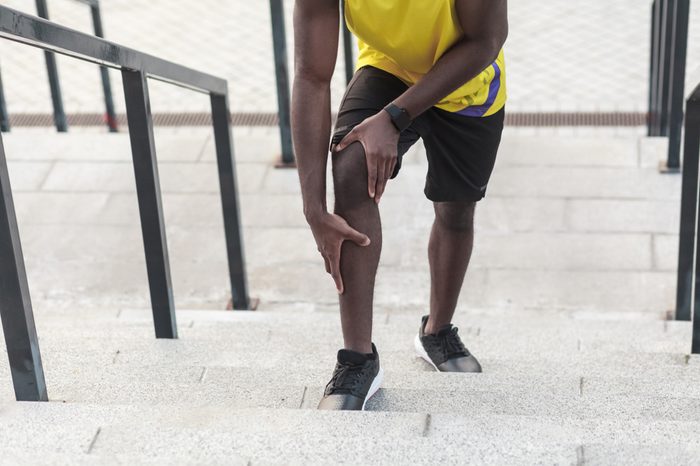
Causes of a meniscus tear
“There are two types of meniscus tears, generally speaking,” says Dr. Starman. “Those which are caused by a traumatic event, and those that are related to underlying arthritis or degenerative changes of the knee.” Dr. Rao adds that a traumatic event can be a twist while running or playing a sport, while degenerative knee refers to damage caused over time—it turns up in runners, for example. “When the leg is not strong enough to do the desired activity, this can lead to the wearing away of the meniscus,” Dr. Rao says.
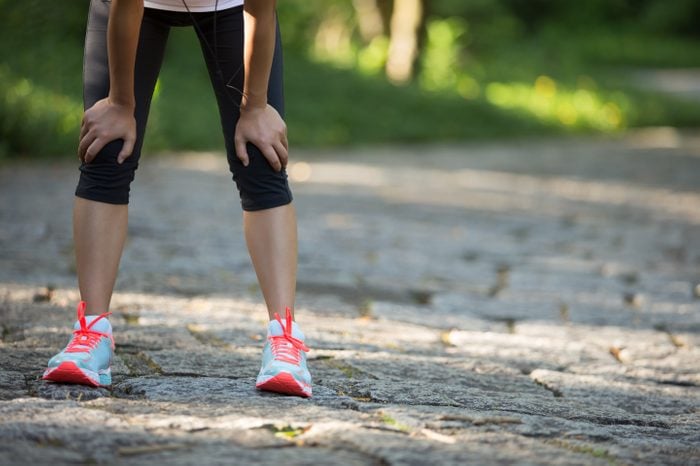
You may not know you’ve torn your meniscus
“Arthritis-related tears may develop gradually and become painful without any specific preceding event,” says Dr. Starman. A traumatic tear, such as an incident that happens when playing a sport may result in symptoms at the time of injury, he adds. There are the 30 everyday movements that are wrecking your joints.
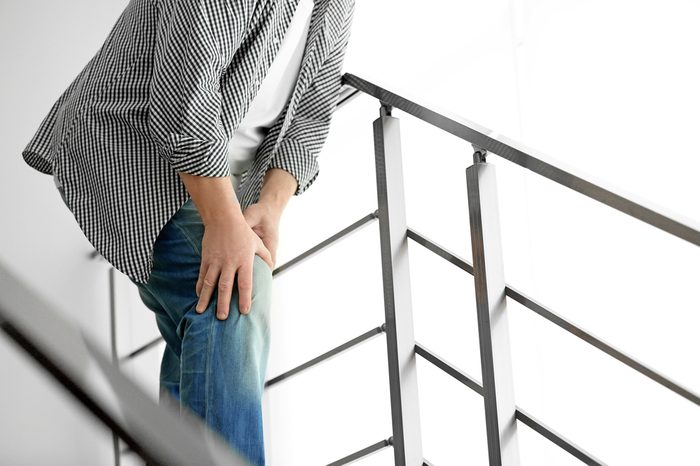
You might get swelling
One of the first torn meniscus symptoms is swelling of the joint and a popping sensation in the knee when bending and straightening it, according to Dr. Starman. But keep in mind, “other meniscus tears may cause little or no pain, and remain undetected,” Dr. Starman says.

You could have a popping sensation
One of the other early torn meniscus symptoms is feeling a pop when you injure your knee, explains Dr. Starman. Or you may have these torn meniscus symptoms when you’re bending and straightening the damaged joint, he adds.

Meniscus tears will cause pain
More torn meniscus symptoms include various types of pain, says Dr. Rao, such as:
- Pain on the inside and/or outside of the knee
- Pain when twisting the knee
- Pain when doing a knee squat
- Pain with running and/or walking
- Pain when stepping off of a curb
In extreme cases, Dr. Rao says the knee may become completely locked into a position and can’t be moved without serious pain. Check out these 9 moves that can help relieve knee pain.
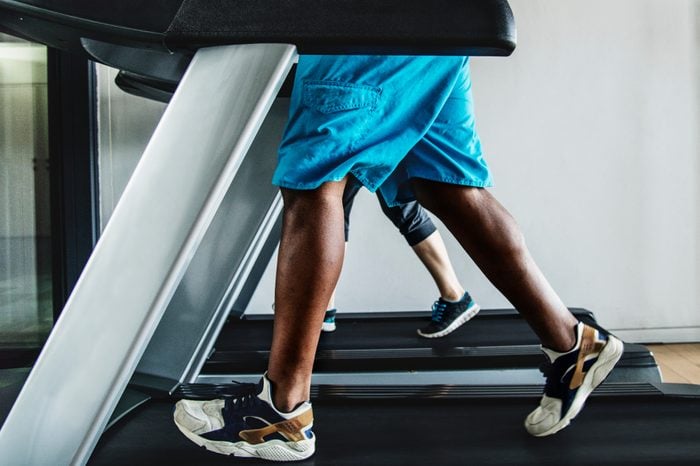
You could lose your range of motion
Aside from pain, popping, and swelling, other common torn meniscus symptoms include decreases in your range of motion, says Dr. Rao. Joints that are stiff and not able to move easily regardless—even if you don’t experience pain or swelling—may point to a possible meniscus tear.
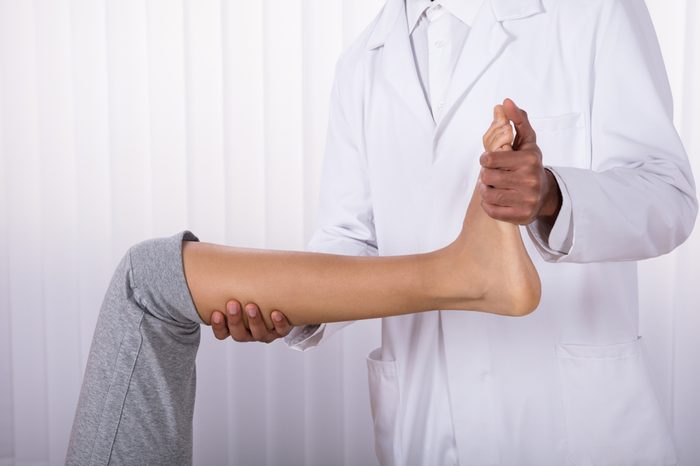
When to see a doctor
“When there is sudden swelling of the knee joint, severe pain along the joint, or a popping or locking sensation of the knee with movements, make an appointment to see a doctor,” Dr. Starman says. In addition to making a doctor’s appointment, Dr. Rao recommends you immediately stop any activities that may cause pain.
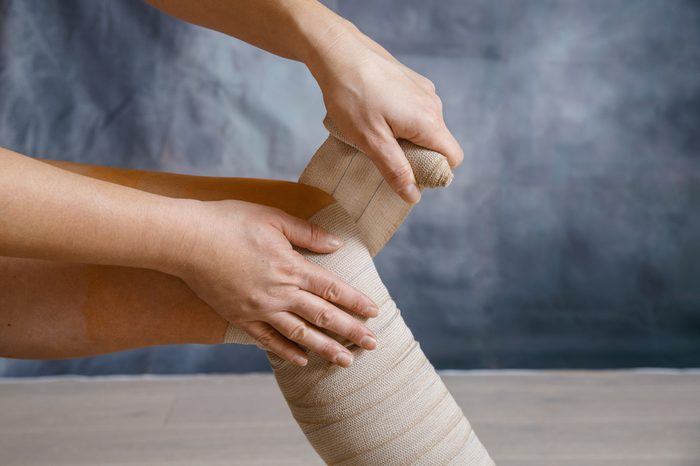
Treating the tear
Depending on your meniscus tear symptoms, your treatment may vary, says Dr. Starman. There is a high success rate of treating the problem without surgery; patients can respond to a treatment plan of anti-inflammatory medications (such as ibuprofen), physical therapy, rest, and sometimes an injection with cortisone, which can help relieve pain and inflammation. Recovery usually takes around six weeks, says Dr. Rao.

Your healing time will depend on where the injury is
Within the meniscus, there is a ‘red zone,’ says Dr. Rao: The outside third of the meniscus that has a large blood supply and therefore will heal easily, and a ‘white zone,’ which is toward the center of the meniscus and is less likely to heal even with surgery.
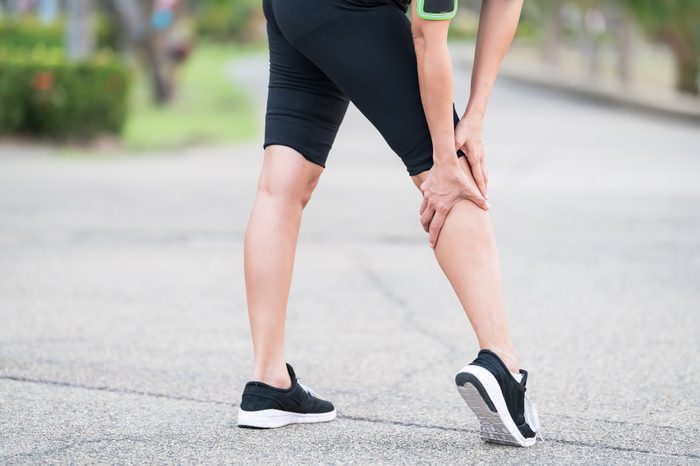
If your knee is locking, you might need surgery
If a treatment plan of medication, rest, and physical therapy doesn’t help, or if your knee locks up, an MRI can reveal whether repair or removal of some loose meniscus tissue could alleviate your torn meniscus symptoms, says Dr. Rao. An orthopedic surgeon can perform an arthroscopic procedure—it allows doctors to view and treat the knee without making a large incision, adds Dr. Starman.

Your pain could be something else
There are a number of conditions that may feel like a meniscus tear, but actually indicate another joint-related condition, Dr. Rao says. These include:
- Osteoarthritis
- Iliotibial band syndrome—knee pain caused by tissue rubbing against the thighbone
- Medial or lateral ligament tear—two of the primary knee ligaments that connect to the knee bone and provide support
- Runner’s knee—pain under the kneecap
- Calf or hamstring strain
- A cyst located in the back of the knee
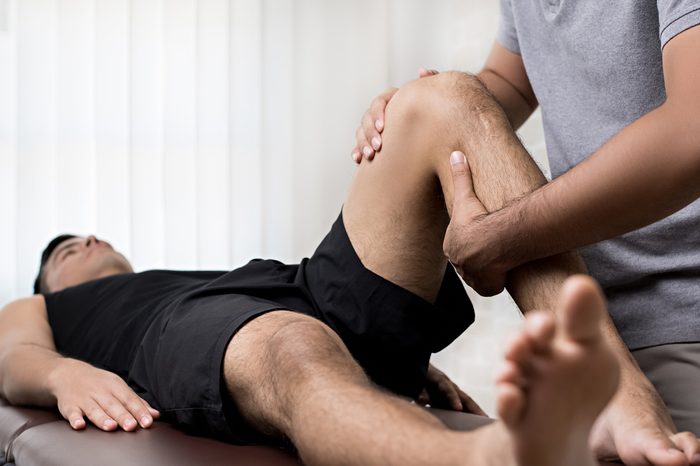
See a doctor to get answers
“The signs and symptoms of meniscus tears are similar to those seen in some other knee conditions such as ligament tears, fractures, and dislocations, Dr. Starman says. It may also have similar symptoms to an aggravation of underlying arthritis, so the most effective way to determine the cause of the pain is to be evaluated by a physician, and often with an MRI.” Check out 9 proven knee pain treatments and learn when you may need each one.

